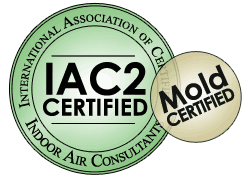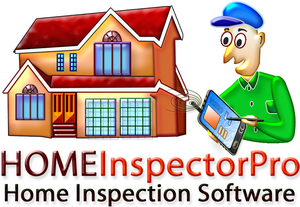Pyramid Home Inspections Call 951-536-1058 for a free price quote!

Pyramid Home Inspections
David Nasser 951-536-1058
Moreno Valley, CA 92553
FHA Rehabilitation
FHA Guidelines for Rehabilitating a Home
The Federal Housing Administration (FHA), which is part of the Department of Housing and Urban Development (HUD), administers various single family mortgage insurance programs. These programs operate through FHA-approved lending institutions which submit applications to have the property appraised and have the buyer's credit approved. These lenders fund the mortgage loans which the Department insures. HUD does not make direct loans to help people buy homes.The Section 203(k) program is 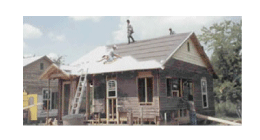 the Department's primary program for the rehabilitation and repair of single family properties. As such, it is an important tool for community and neighborhood revitalization and for expanding homeownership opportunities. Since these are the primary goals of HUD, the Department believes that Section 203(k) is an important program and intend to continue to strongly support the program and the lenders that participate in it.
the Department's primary program for the rehabilitation and repair of single family properties. As such, it is an important tool for community and neighborhood revitalization and for expanding homeownership opportunities. Since these are the primary goals of HUD, the Department believes that Section 203(k) is an important program and intend to continue to strongly support the program and the lenders that participate in it.
Many lenders have successfully used the Section 203(k) program in partnership with state and local housing agencies and nonprofit organizations to rehabilitate properties. These lenders, along with state and local government agencies, have found ways to combine Section 203(k) with other financial resources, such as HUD's HOME, HOPE, and Community Development Block Grant Programs, to assist borrowers. Several state housing finance agencies have designed programs, specifically for use with Section 203(k) and some lenders have also used the expertise of local housing agencies and nonprofit organizations to help manage the rehabilitation processing.The Department also believes that the Section 203(k) program is an excellent means for lenders to demonstrate their commitment to lending in lower income communities and to help meet their responsibilities under the Community Reinvestment Act (CRA). HUD is committed to increasing homeownership opportunities for families in these communities and Section 203(k) is an excellent product for use with CRA-type lending programs. If you have questions about the 203(k) program or are interested in getting a 203(k) insured mortgage loan, we suggest that you get in touch with an FHA-approved lender in your area or the Homeownership Center in your area.
Most mortgage financing plans provide only permanent financing. That is, the lender will not usually close the loan and release the mortgage proceeds unless the condition and value of the property provide adequate loan security. When rehabilitation is involved, this means that a lender typically requires the improvements to be finished before a long-term mortgage is made. When a homebuyer wants to purchase a house in need of repair or modernization, the homebuyer usually has to obtain financing first to purchase the dwelling, additional financing to do the rehabilitation construction, and a permanent mortgage when the work is completed to pay off the interim loans with a permanent mortgage. Often the interim financing (the acquisition and construction loans) involves relatively high interest rates and short amortization periods. The Section 203(k) program was designed to address this situation. The borrower can get just one mortgage loan, at a long-term fixed (or adjustable) rate, to finance both the acquisition and the rehabilitation of the property. To provide funds for the rehabilitation, the mortgage amount is based on the projected value of the property with the work completed, taking into account the cost of the work. To minimize the risk to the mortgage lender, the mortgage loan (the maximum allowable amount) is eligible for endorsement by HUD as soon as the mortgage proceeds are disbursed and a rehabilitation escrow account is established. At this point the lender has a fully-insured mortgage loan.
Eligible Property
To be eligible, the property must be a one- to four-family dwelling that has been completed for at least one year. The number of units on the site must be acceptable according to the provisions of local zoning requirements. All newly constructed units must be attached to the existing dwelling. Cooperative units are not eligible. Homes that have been demolished, or will be razed as part of the rehabilitation work, are eligible provided some of the existing foundation system remains in place. In addition to typical home rehabilitation projects, this program can be used to convert a one-family dwelling to a two-, three-, or four-family dwelling. An existing multi-unit dwelling could be decreased to a one- to four-family unit. An existing house (or modular unit) on another site can be moved onto the mortgaged property. However, release of loan proceeds for the existing structure on the non-mortgaged property is not allowed until the new foundation has been properly inspected and the dwelling has been properly placed and secured to the new foundation. A 203(k) mortgage may be originated on a "mixed use" residential property provided the property has no greater than 25 percent (for a one story building); 33 percent (for a three story building); and 49 percent (for a two story building) of its floor area used for commercial (storefront) purposes. The commercial use will not affect the health and safety of the occupants of the residential property and the rehabilitation funds will only be used for the residential functions of the dwelling and areas used to access the residential part of the property.
Condominium Unit
The Department also permits Section 203(k) mortgages to be used for individual units in condominium projects that have been approved by FHA, the Department of Veterans Affairs, or are acceptable to FNMA under the guidelines listed below. The 203(k) program was not intended to be a project mortgage insurance program, as large scale development has considerably more risk than individual single-family mortgage insurance. Therefore, condominium rehabilitation is subject to the following conditions:
- Owner/occupant and qualified non-profit borrowers only- no investors.
- Rehabilitation is limited only to the interior of the unit. Mortgage proceeds are not to be used for the rehabilitation of exteriors or other areas which are the responsibility of the condominium association, except for the installation of firewalls in the attic for the unit
- Only the lesser of five units per condominium association, or 25 percent of the total number of units, can be undergoing rehabilitation at any one time
- The maximum mortgage amount cannot exceed 100 percent of after-improved value.
- After rehabilitation is complete, the individual buildings within the condominium must not contain more than four units.
By law, Section 203(k) can only be used to rehabilitate units in one-to-four unit structures. However, this does not mean that the condominium project, as a whole, can only have four units or that all individual structures must be detached. Example: A project might consist of six buildings each containing four units, for a total of 24 units in the project and, thus, be eligible for Section 203(k). Likewise, a project could contain a row of more than four attached townhouses and be eligible for Section 203(k) because HUD considers each townhouse as one structure, provided each unit is separated by a 1 1/2 hour firewall (from foundation up to the roof). Similar to a project with a condominium unit with a mortgage insured under Section 234(c) of the National Housing Act, the condominium project must be approved by HUD prior to the closing of any individual mortgages on the condominium units.
How the Program Can Be Used
This program can be used to accomplish rehabilitation and/or improvement of an existing one-to-four unit dwelling in one of three ways:
- To purchase a dwelling and the land on which the dwelling is located and rehabilitate it.
- To purchase a dwelling on another site, move it onto a new foundation on the mortgaged property and rehabilitate it.
- To refinance existing indebtedness and rehabilitate such a dwelling.
To purchase a dwelling and the land on which the dwelling is located and rehabilitate it, and to refinance existing indebtedness and rehabilitate such a dwelling, the mortgage must be a first lien on the property and the loan proceeds (other than rehabilitation funds) must be available before the rehabilitation begins. To purchase a dwelling on another site, move it onto a new foundation and rehabilitate it, the mortgage must be a first lien on the property; however, loan proceeds for the moving of the house cannot be made available until the unit is attached to the new foundation.
Eligible Improvements
Mortgage proceeds must be used in part for rehabilitation and/or improvements to a property. There is a minimum $5000 requirement for the eligible improvements on the existing structure(s) on the property. Rehabilitation or improvements to a detached garage, a new detached garage, or the addition of an attached unit(s) (if allowed by the local zoning ordinances) can also be included in this first $5000. Properties with separate detached units are acceptable, however, a newly constructed unit must be attached to an existing unit to be eligible under 203(k). Any repair is acceptable in the first $5000 requirement that may affect the health and safety of the occupants. Minor-or cosmetic repairs by themselves cannot be included in the first $5000, but may be added after the $5000 threshold is reached. Examples of eligible improvements are listed below. (This list is not all inclusive.)
- Structural alterations and reconstruction (e.g., repair or replacement of structural damage, chimney repair, additions to the structure, installation of an additional bath(s), skylights, finished attics and/or basements, repair of termite damage and the treatment against termites or other insect infestation, etc.).
- Changes for improved functions and modernization (e.g., remodeled bathrooms and kitchens, including permanently installed appliances, i.e., built-in range and/or oven, range hood, microwave, dishwasher).
- Elimination of health and safety hazards (including the resolution of defective paint surfaces or lead-based paint problems on homes built prior to 1978).
- Changes for aesthetic appeal and elimination of obsolescence (e.g., new exterior siding, adding a second story to the home, covered porch, stair railings, attached carport).
- Reconditioning or replacement of plumbing (including connecting to public water and/or sewer system), heating, air conditioning and electrical systems. Installation of new plumbing fixtures is acceptable, including interior whirlpool bathtubs.
- Installation of Well and/or Septic System. The well or septic system must be installed or repaired prior to beginning any other repairs to the property.
- Roofing, gutters and downspouts.
- Flooring, tiling and carpeting.
- Energy conservation improvements (e.g., new double pane windows, steel insulated exterior doors, insulation, solar domestic hot water systems, caulking and weatherstripping, etc.).
- Major landscape work and site improvement (e.g., patios, decks and terraces that improve the value of the property equal to the dollar amount spent on the improvements or required to preserve the property from erosion).
- The correction of grading and drainage problems.
- Tree removal is acceptable if the tree is a safety hazard to the property.
- Repair of existing walks and driveway if it may affect the safety of the property.
- Improvements for accessibility to a Disabled Person (e.g., remodeling kitchens and baths for wheelchair access, lowering kitchen cabinets, installing wider doors and exterior ramps, etc.).
When basic improvements are involved, the following costs can be included in addition to the minimum $5000 requirement:
- New free standing range, refrigerator, washer and dryer, trash compactor and other appurtenances (used appliances are not eligible).
- Interior and exterior painting.
- The repair of a swimming pool, not to exceed $1,500.
Luxury items and improvements that do not become a permanent part of the real property are not eligible as a cost of rehabilitation. The items listed below (not limited to this list) are not acceptable under the 203(k) program, including the repair of any of the following:
Barbecue pit; bathhouse; dumbwaiter; exterior hot tub; sauna, spa and whirlpool bath; outdoor fireplace or hearth; photo mural; installation of a new swimming pool; gazebo; television antenna; satellite dish; tennis court; tree surgery. Additions or alterations to provide for commercial use are not eligible.
Required Improvements
All rehabilitation construction and/or additions financed with Section 203(k) mortgage proceeds must comply with the following:
A. Cost Effective Energy Conservation Standards
(1) Addition to Existing Structure. New construction must conform with local codes and HUD Minimum Property Standards.
(2) Rehabilitation of Existing Structure. To improve the thermal efficiency of the dwelling, the following are required:
- Weatherstrip all doors and windows to reduce infiltration of air when existing weatherstripping is inadequate or nonexistent.
- Caulk or seal all openings, cracks or joints in the building envelope to reduce air infiltration.
- Insulate all openings in exterior walls where the cavity has been exposed as a result of the rehabilitation. Insulate ceiling areas where necessary
- Adequately ventilate attic and crawl space areas. For additional information and requirements, refer to 24 CFR Part 39.
(3) Replacement of Systems.
- Heating, ventilating, and air conditioning system supply and return pipes and ducts must be insulated whenever they run through unconditioned spaces.
- Heating systems, burners, and air conditioning systems must be carefully sized to be no greater than 15 percent oversized for the critical design, heating or cooling, except to satisfy the manufacturer's next closest nominal size.
B. Smoke Detectors. Each sleeping area must be provided with a minimum of one (1) approved, listed and labeled smoke detector installed adjacent to the sleeping area.
Required Appraisals
In order to determine the maximum mortgage amount, the 203(k) valuation analysis consists of two separate determinations of value.
A. As-is Value. A separate appraisal (Uniform Residential Appraisal Report) may be required to determine the as-is value. However, the lender may determine that an as-is appraisal is not feasible or necessary. In this instance, the lender ma(3)y use the contract sales price on a purchase transaction, or the existing debt on a refinance transaction, as the as-is value, when this does not exceed a reasonable estimate of value.
Further, on a refinance transaction, when a large amount of existing debt (i.e., first and second mortgages) suggests that the borrower has little or no equity in the property, the lender must obtain a current as-is appraisal on which to base the estimated as-is value. On a refinance, the borrower may have substantial equity in the property to assure that no further down payment is required on the new loan amount. In some cases, the borrower will not have an existing mortgage on the property. In this case, the lender should obtain some comparables from a real estate agent/ broker to estimate an approximate as-is value of the property. Another way of establishing the as-is value is to obtain a copy of the local jurisdiction tax valuation on the property.
B. Value After Rehabilitation. The expected market value of the property is determined upon completion of the proposed rehabilitation and/or improvements.
For a HUD-owned property an as-is appraisal is not required and a DE lender may request the HUD Field Office to release the outstanding HUD Property Disposition appraisal on the property to the lender to establish the maximum mortgage for the property. The HUD appraisal will be considered acceptable for use by the lender if it is not over one year old prior to bid acceptance from HUD and the sales contract price plus the cost of rehabilitation does not exceed 110 percent of the "As Repaired Value" shown on the HUD appraisal. If the HUD appraisal is insufficient, the DE Lender may order another appraisal to assure the market value of the property will be adequate to make the purchase of the property feasible. For a HUD-property, down payment for an owner-occupant or non-profit organization is three percent of the accepted bid price of the property and 100 percent financing on all other costs.
Recently Acquired Properties
Homebuyers who purchase a property with cash can refinance the property using 203(k) within six (6) months of purchase, the same as if the buyer purchased the property with a 203(k) insured loan to begin with. Evidence of interim financing is not required. The mortgage calculations will be done the same as a purchase transaction. Cash back will be allowed to the borrower in this situation less any down payment and closing cost requirement for the 203(k) loan. A copy of the Sales Contract and the HUD-1 Settlement Statement must be submitted to verify the accepted bid price (as-is value) of the property and the closing date.
Architectural Exhibits
The improvements must comply with HUD's Minimum Property Standards and all local codes and ordinances. The homebuyer may decide to employ an architect or a consultant to prepare the proposal. The homebuyer must provide the lender with the appropriate architectural exhibits that clearly show the scope of work to be accomplished. The following list of exhibits are recommended, but may be modified by the local HUD Field Office as required.
- A Plot Plan of the Site is required only if a new addition is being made to the existing structure. Show the location of the structure(s), walks, drives, streets, and other relevant details. Include finished grade elevations at the property corners and building corners. Show the required flood elevation.
- Proposed Interior Plan of the Dwelling. Show where structural or planning changes are contemplated, including an addition to the dwelling.
- Work Write-up and Cost Estimate. Any format may be used for these documents, however, quantity and the cost of each item must be shown. Also include a complete description of the work for each item.
Cost estimates must include labor and materials sufficient to complete the work by a contractor. Homebuyers doing their own work cannot eliminate the cost estimate for labor, because if they cannot complete the work there must be sufficient money in the escrow account to get a subcontractor to do the work. The Work Write-up does not need to reflect the color or specific model numbers of appliances, bathroom fixtures, carpeting, etc., unless they are nonstandard units. The consultant who prepares the work write-up and cost estimate (or an architect, engineering or home inspection service) needs to inspect the property to assure:
(1) there are no rodents, dryrot, termites and other infestation
(2) there are no defects that will affect the health and safety of the occupants
(3) the adequacy of the existing structural, heating, plumbing, electrical and roofing systems
(4) the upgrading of thermal protection (where necessary).
Definitions for Use in the 203(k) Program
A. Insurance of Advances.
This refers to insurance of the 203(k) mortgage prior to the rehabilitation period. A mortgage that is a first lien on the property is eligible to be endorsed for insurance following mortgage loan closing, disbursement of the mortgage proceeds, and establishment of the Rehabilitation Escrow Account. The mortgage amount may include funds for the purchase of the property or the refinance of existing indebtedness, the costs incidental to closing the transaction, and the completion of the proposed rehabilitation.
The mortgage proceeds allocated for the rehabilitation will be escrowed at closing in a Rehabilitation Escrow Account.
B. Rehabilitation Escrow Account.
When the loan is closed, the proceeds designated for the rehabilitation or improvement, including the contingency reserve, are to be placed in an interest bearing escrow account insured by the Federal Deposit Insurance Corporation (FDIC) or the National Credit Union Administration (NCUA). This account is not an escrow for the paying of real estate taxes, insurance premiums, delinquent notes, ground rents or assessments, and is not to be treated as such. The net income earned by the Rehabilitation Escrow Account must be paid to the mortgagor. The method of such payment is subject to agreement between mortgagor and mortgagee. The lender (or its agent) will release escrowed funds upon completion of the proposed rehabilitation in accordance with the Work Write-Up and the Draw Request (Form HUD-9746,A).
C. Inspections.
Performed by HUD-approved fee inspectors or on the HUD-accepted staff of the DE lender. The fee inspector is to use the architectural exhibits in order to make a determination of compliance or non-compliance. When the inspection is scheduled with a payment, the inspector is to indicate whether or not the work has been completed. Also, the inspector is to use the Draw Request form (Form HUD-9746-A). The first draw must not be scheduled until the lender has determined that the applicable building permits have been issued.
D. Holdback.
A ten percent holdback is required on each release from the Rehabilitation Escrow Account. The total of all holdbacks may be released only after a final inspection of the rehabilitation and issuance of the Final Release Notice. The lender (or its agent) may retain the holdback for a maximum of 35 calendar days, or the time period required by law to file a lien, whichever is longer, to ensure that no liens are placed on the property.
E. Contingency Reserve.
At the discretion of the HUD Field Office, the cost estimate may include a contingency reserve if the existing construction is less than 30 years old, or the nature of the work is complex or extensive. For properties older than 30 years, the cost estimate must include a contingency reserve of a minimum of ten percent of the cost of rehabilitation. The contingency reserve may not exceed twenty percent where major remodeling is contemplated. If the utilities were not turned on for inspection, a minimum fifteen percent is required. If the scope of work is well defined and uncomplicated, and the rehabilitation cost is less then $7500, the lender may waive the requirement for a contingency reserve. The contingency reserve account can be used by the borrower to make additional improvements to the dwelling. A Request for Change Letter must be submitted with the applicable cost estimates. The change can only be accepted when the lender determines it is unlikely that any deficiency that may affect the health and safety of the property will be discovered and the mortgage will not exceed the appraised value of the property less the statutory investment requirement. If the mortgage exceeds the appraised value less the statutory investment, then the contingency reserve must be paid down on the mortgage principal. If a borrower feels that the contingency reserve will not be used and he wishes to avoid having the reserve applied to reduce the mortgage balance after issuance of the Final Release Notice, the borrower may place his own funds into the contingency reserve account. In this case, if money is remaining in the account after the Final Release Notice is issued it may be released back to the borrower. If the mortgage is at the maximum mortgage limit for the area or for the particular type of transaction, but a contingency reserve is necessary, the contingency reserve must be placed into an escrow account from other funds of the borrower at closing. Under these circumstances, if the contingency reserve is not used, the remaining funds in the escrow account will be released to the borrower after the Final Release Notice has been issued.
F. Mortgage Payment Reserve.
Funds not to exceed the amount of six mortgage payments (including the mortgage insurance premium) can be included in the cost of rehabilitation to assist a mortgagor (whether a principal residence or an investment property) when the property is not occupied during rehabilitation. The number of mortgage payments cannot exceed the completion time frame required in the Rehabilitation Loan Agreement. The lender must make the monthly mortgage payments directly from the interest bearing reserve account. Money remaining in the reserve account after the Final Release Notice must be applied to the mortgage principal.
G. Approval of Non-Profit Agencies.
A non-profit agency, before it can be approved as an eligible mortgagor and obtain the same mortgage amount as available to owner-occupants on Section 203(k) mortgages, must demonstrate its experience as a housing provider to HUD and meet all other requirements described in HUD Handbook. It must also be able to provide satisfactory evidence that it has the financial capacity to purchase the properties.
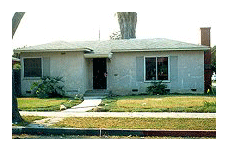
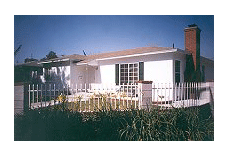
Here's what our clients say about us
"David is friendly, knowledgeable, and dependable. I know I can always count on him. His prices are reasonable and the quality of work is outstanding.
Carlos Salazar Jr.
I am your Moreno Valley home inspector. Give me a call at 951-536-1058 to discuss your new home purchase.
Need a website for your business?


